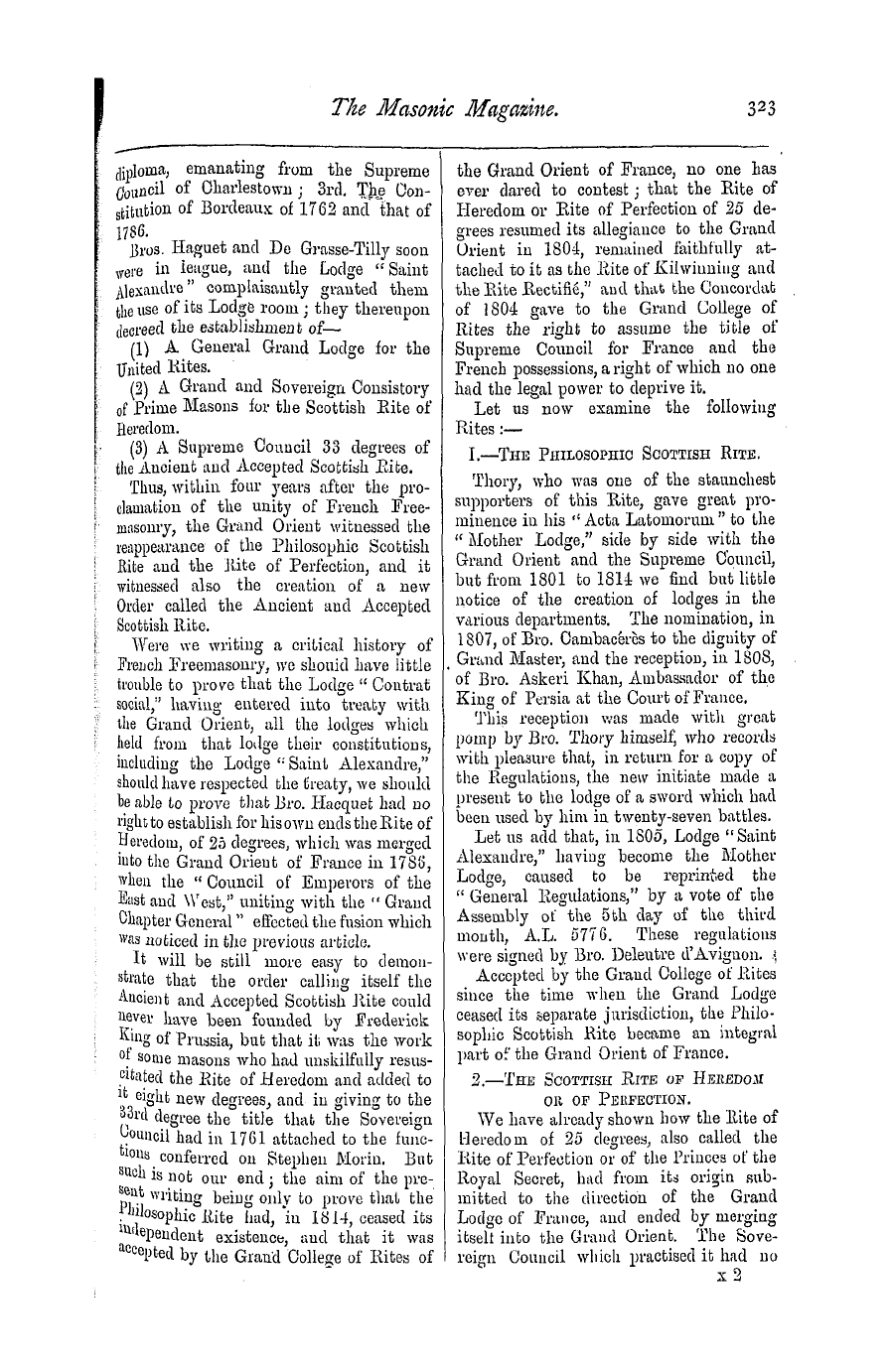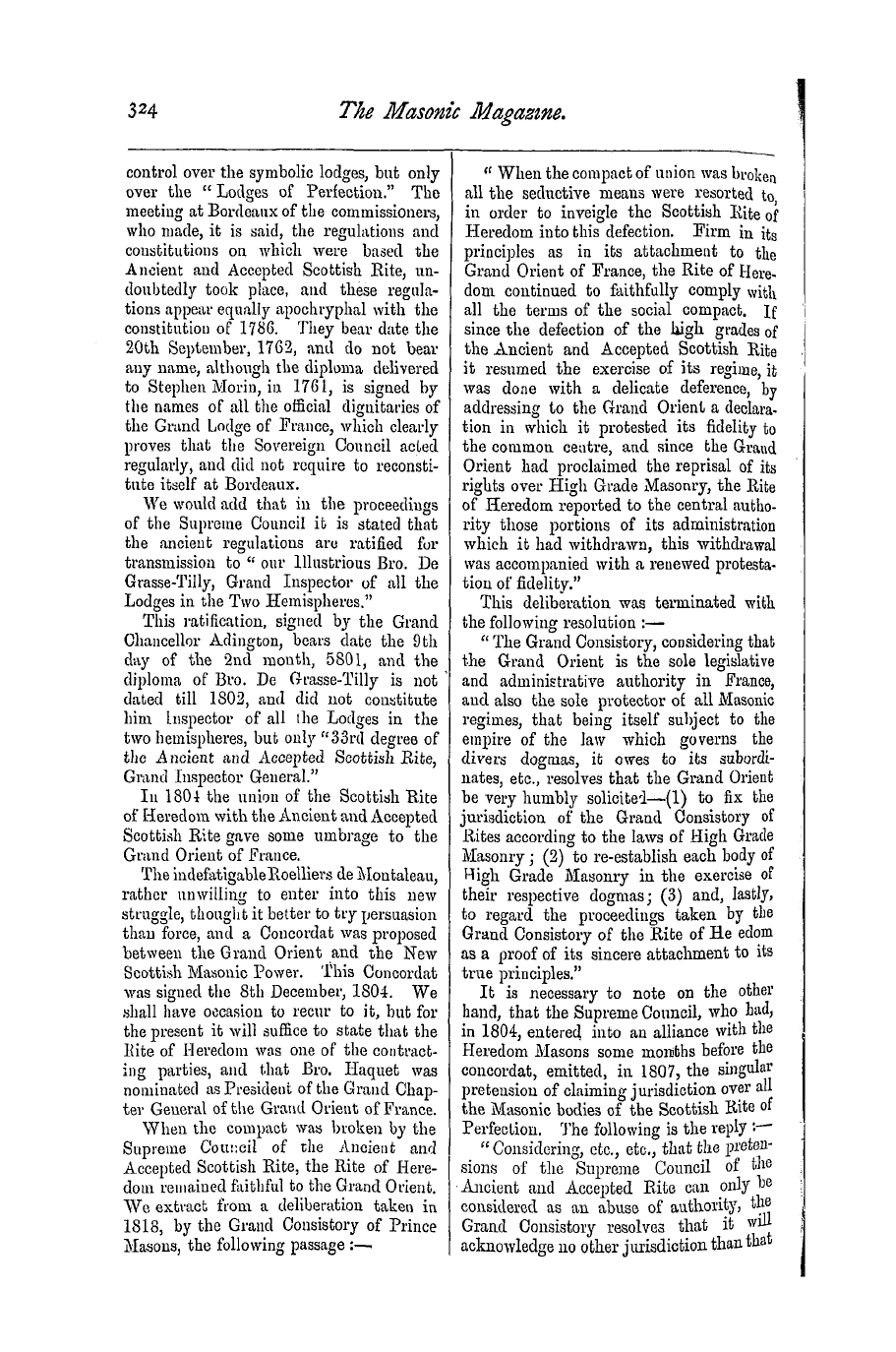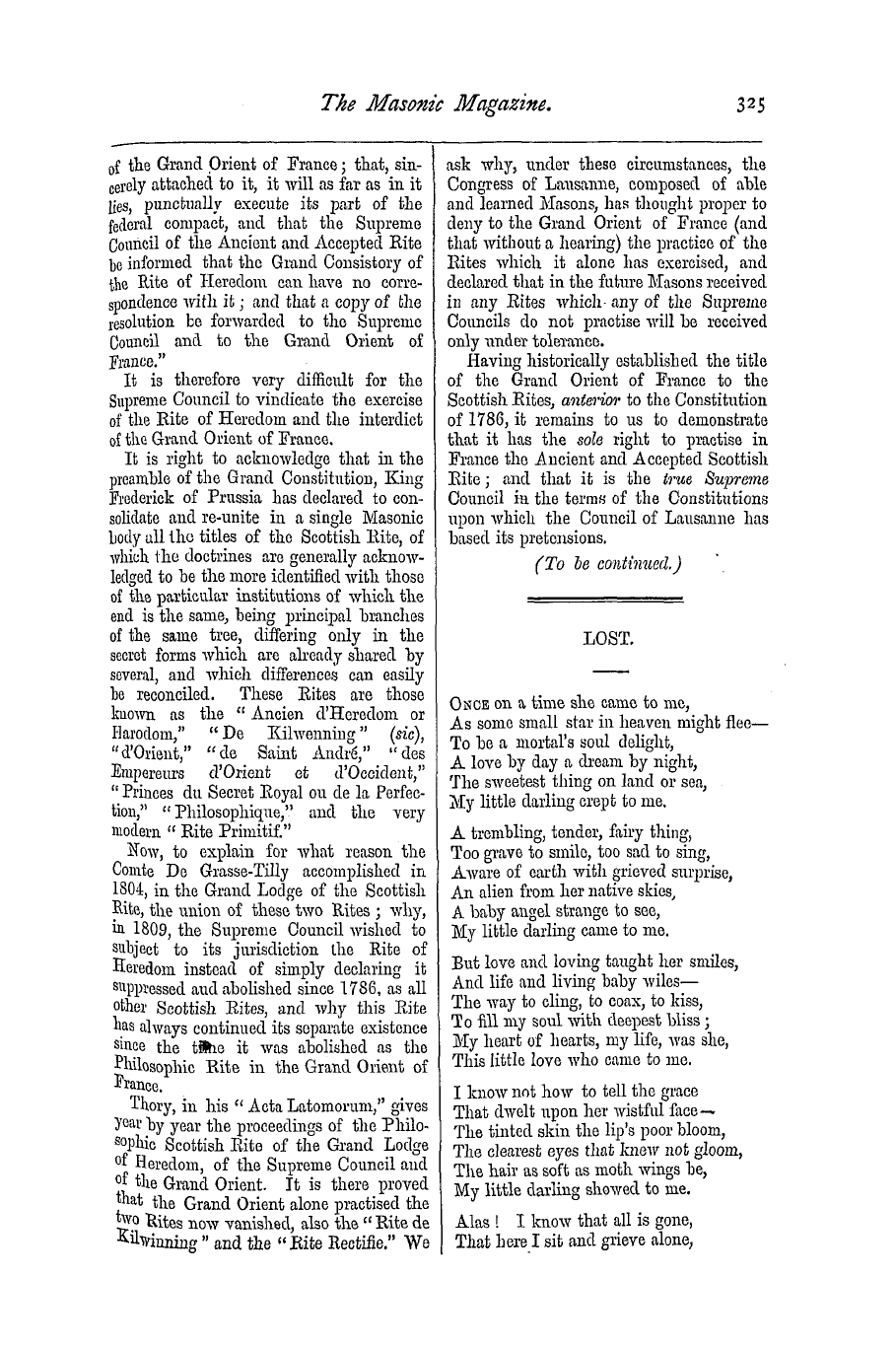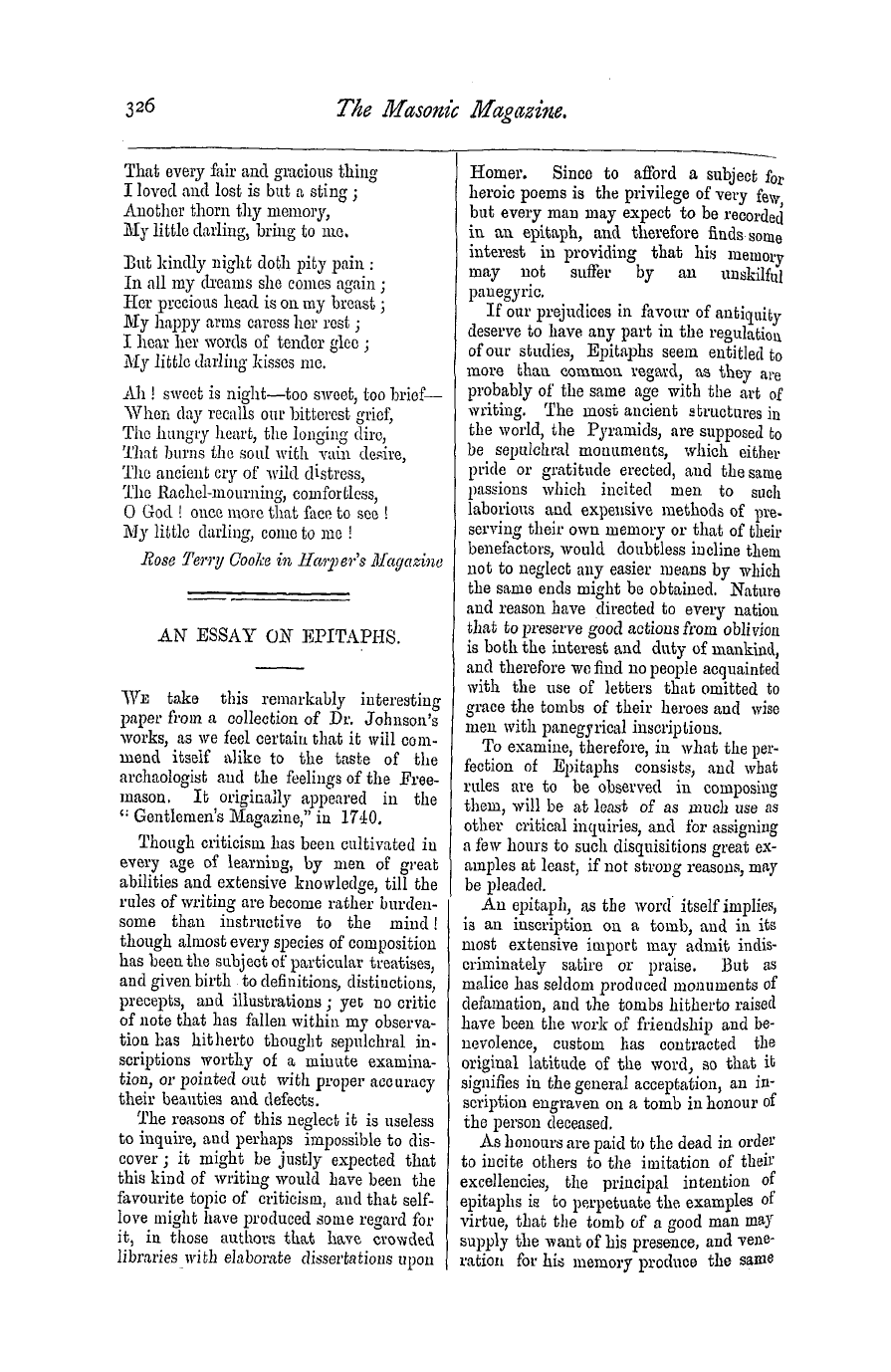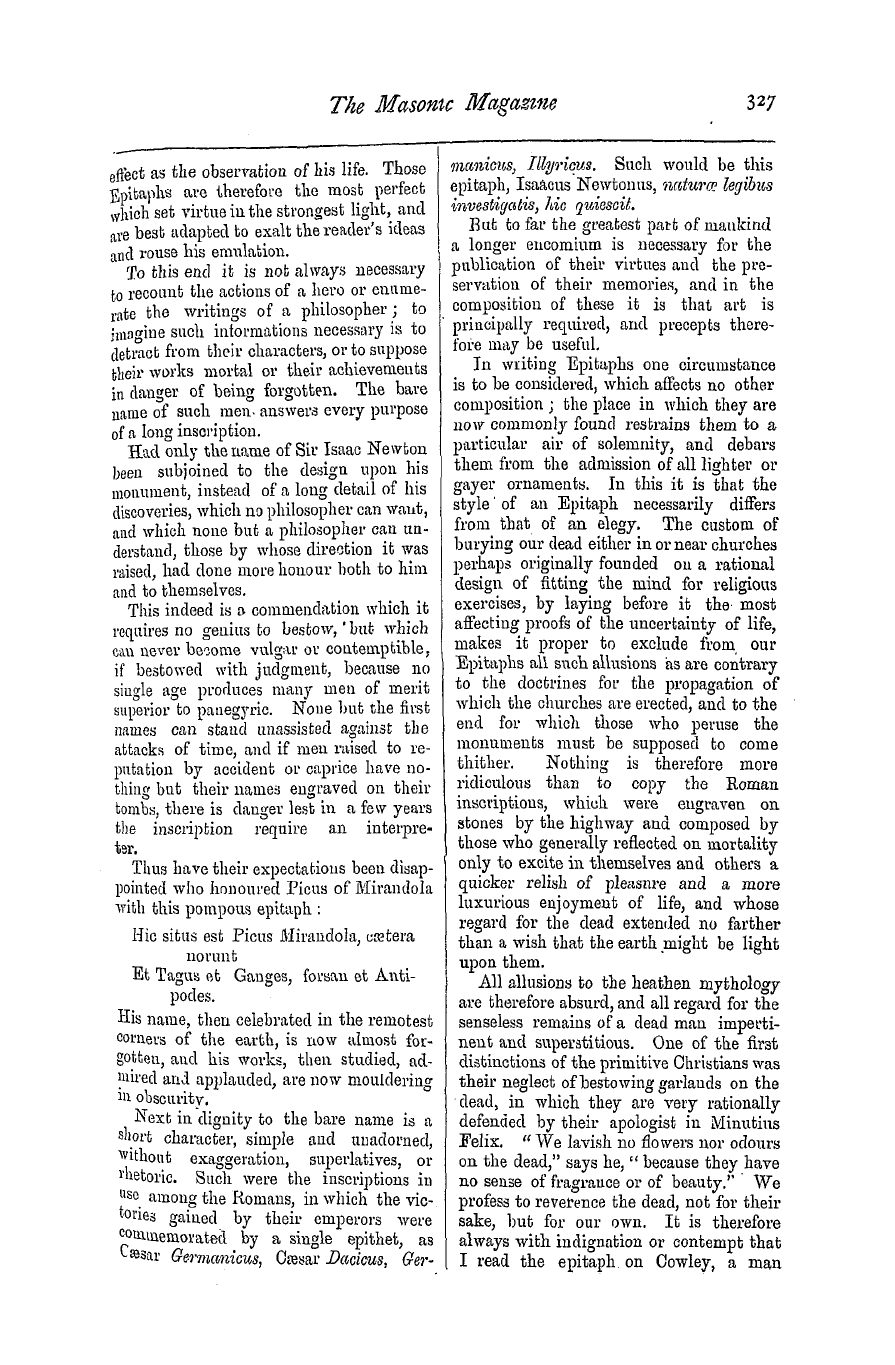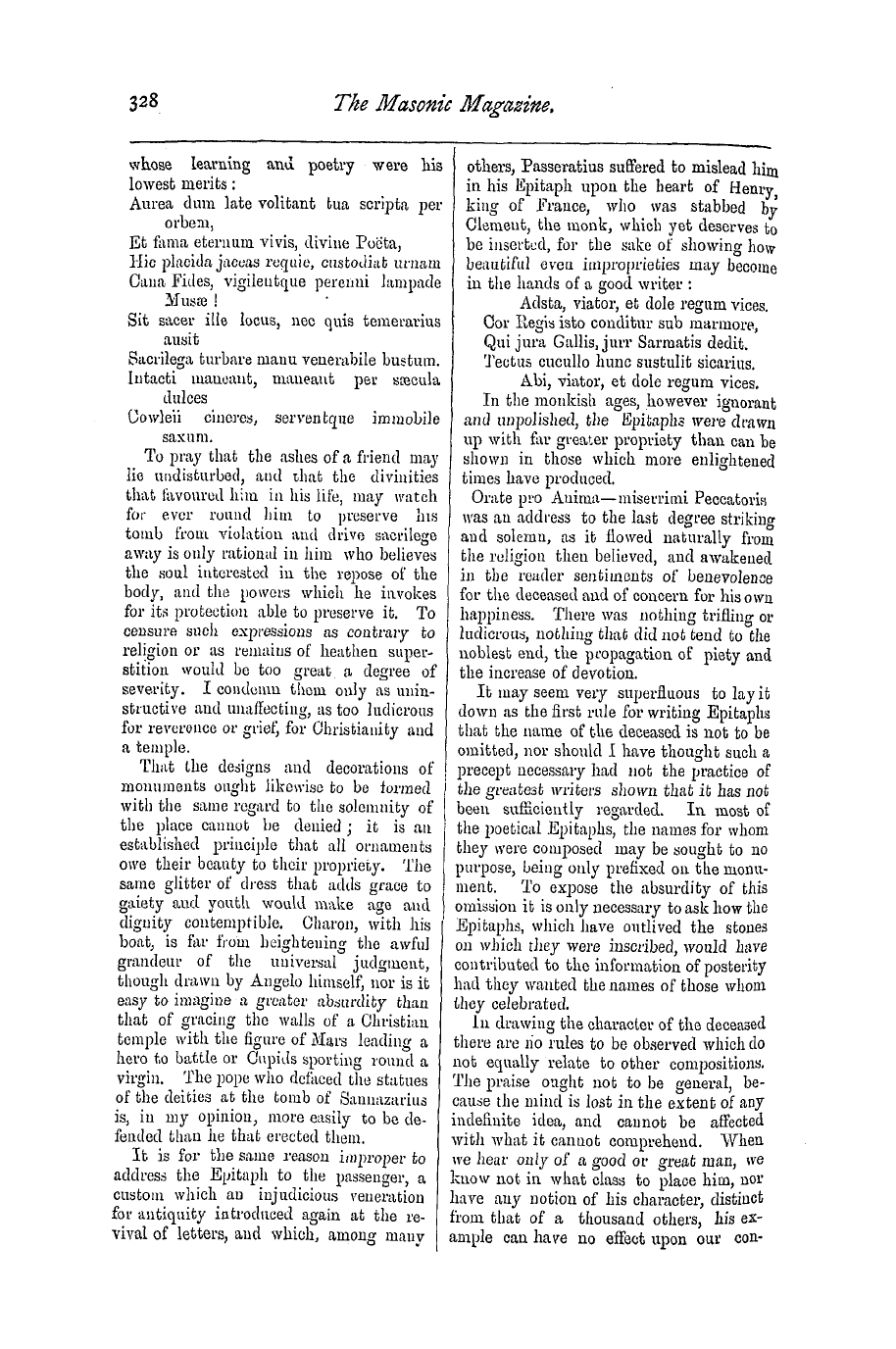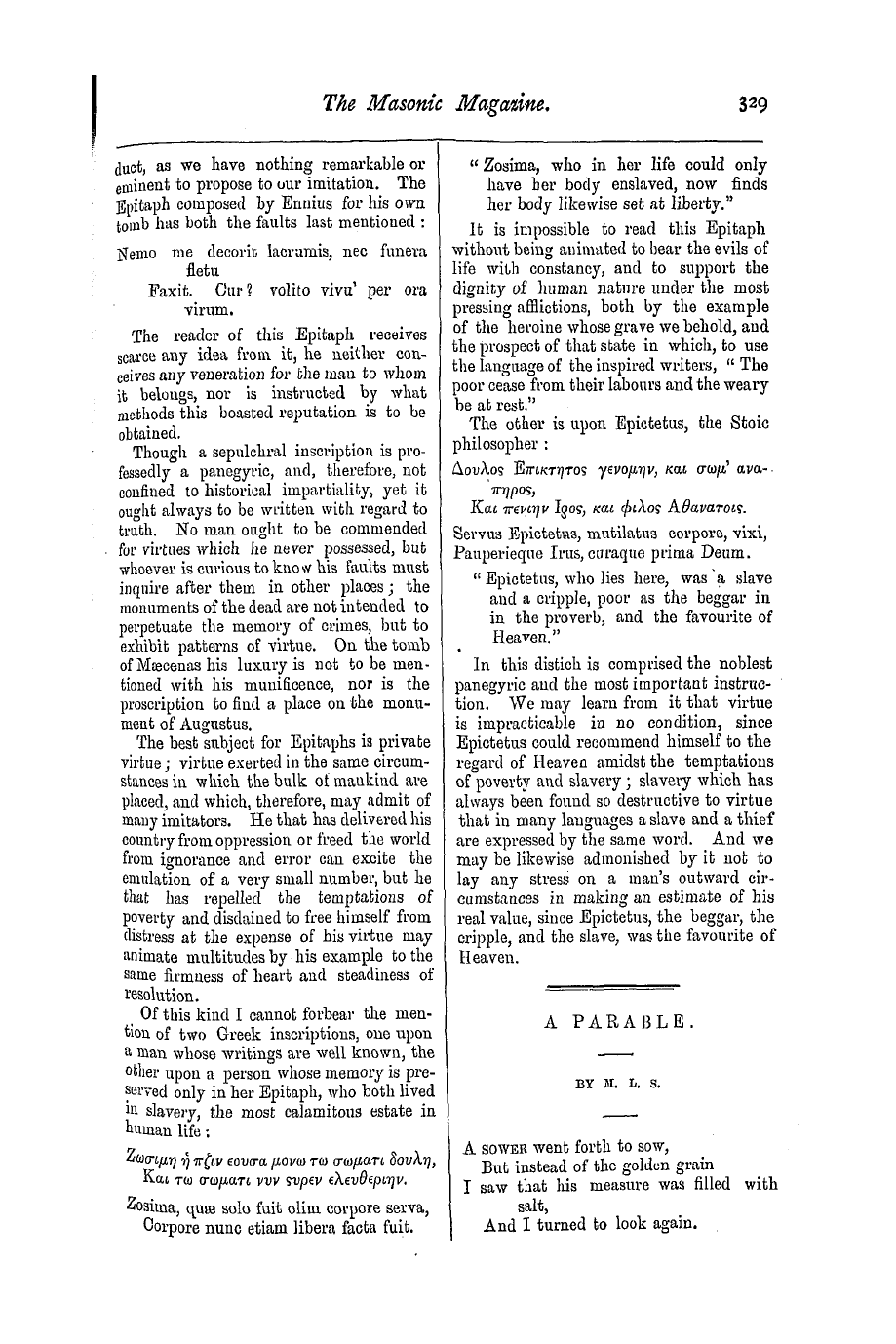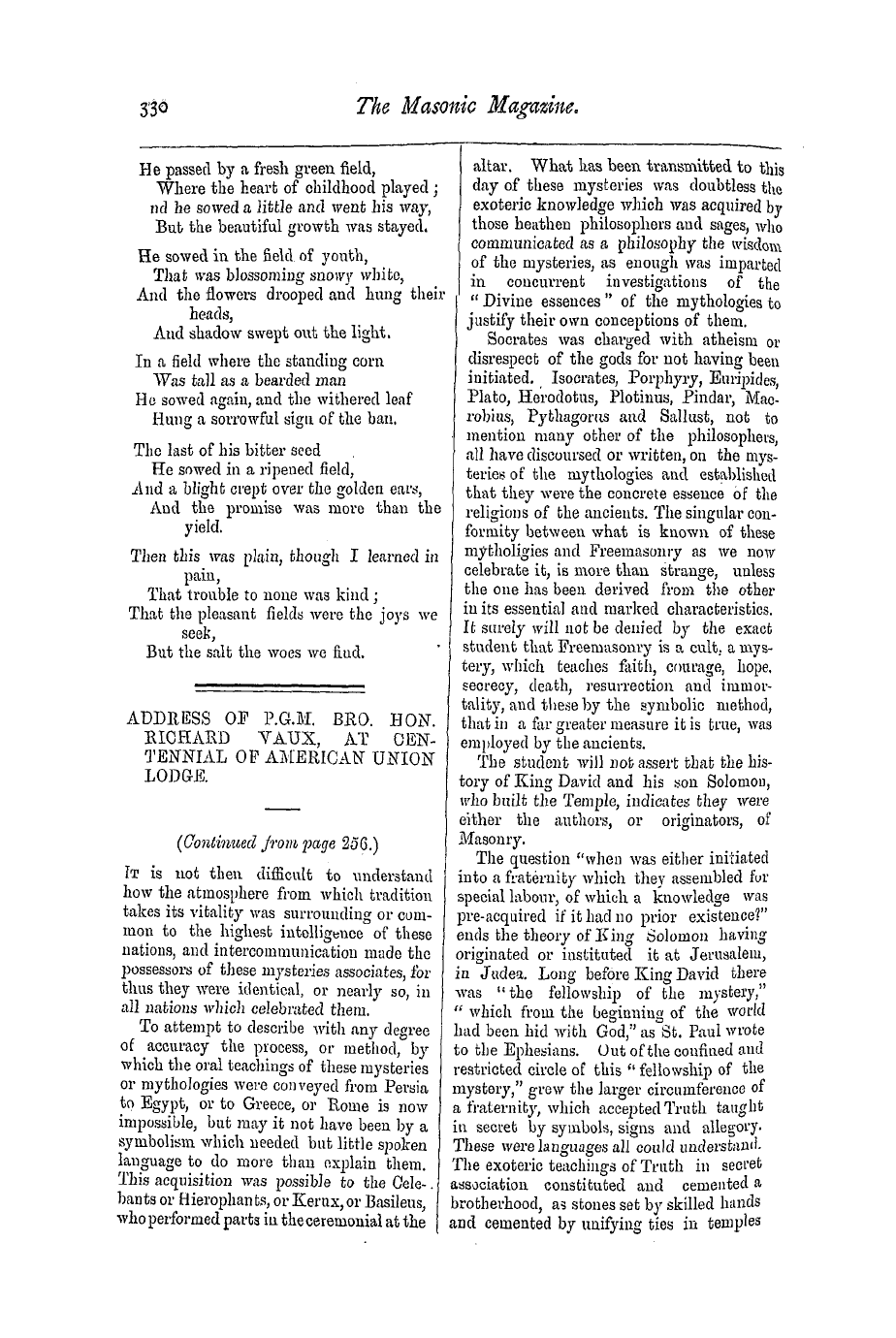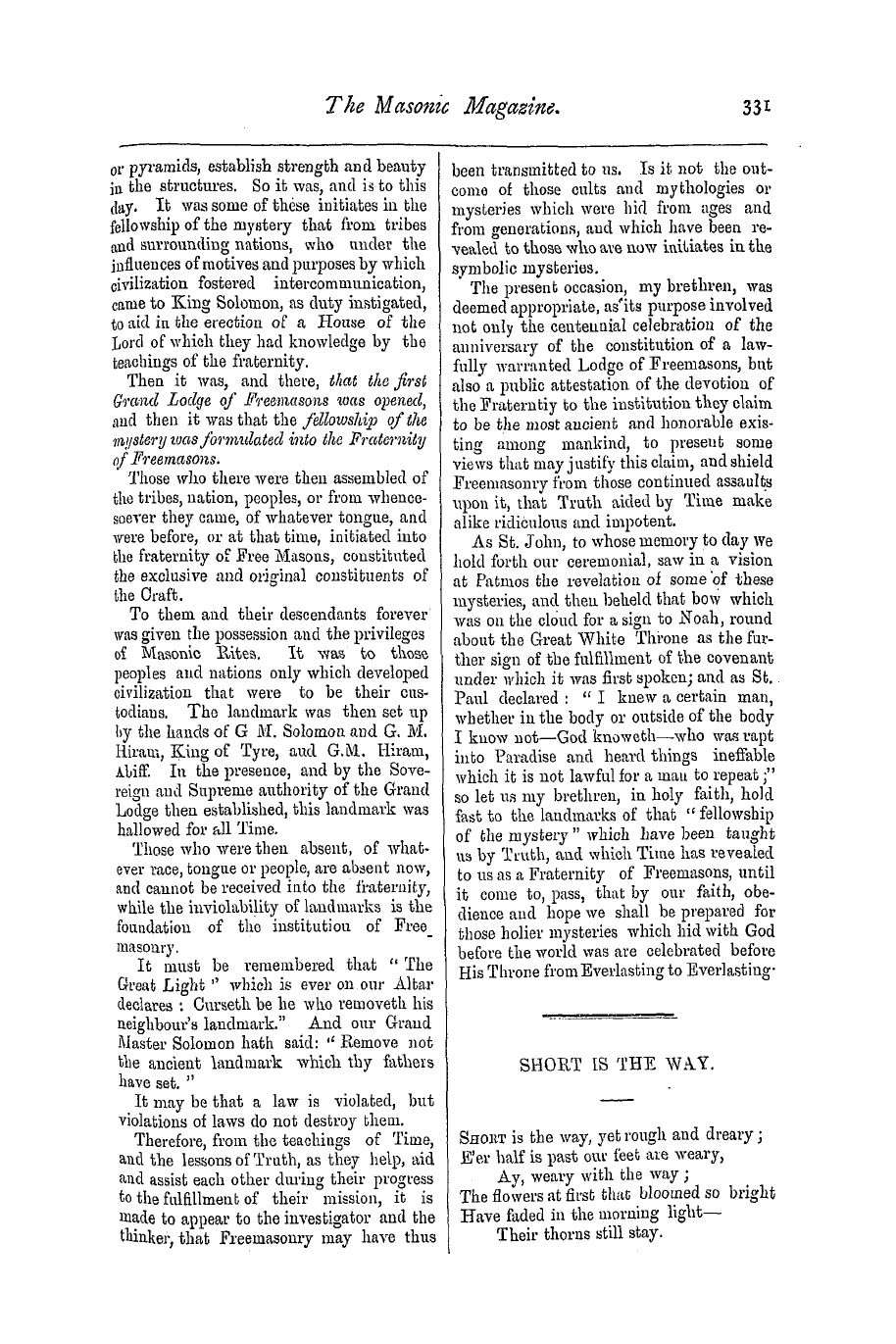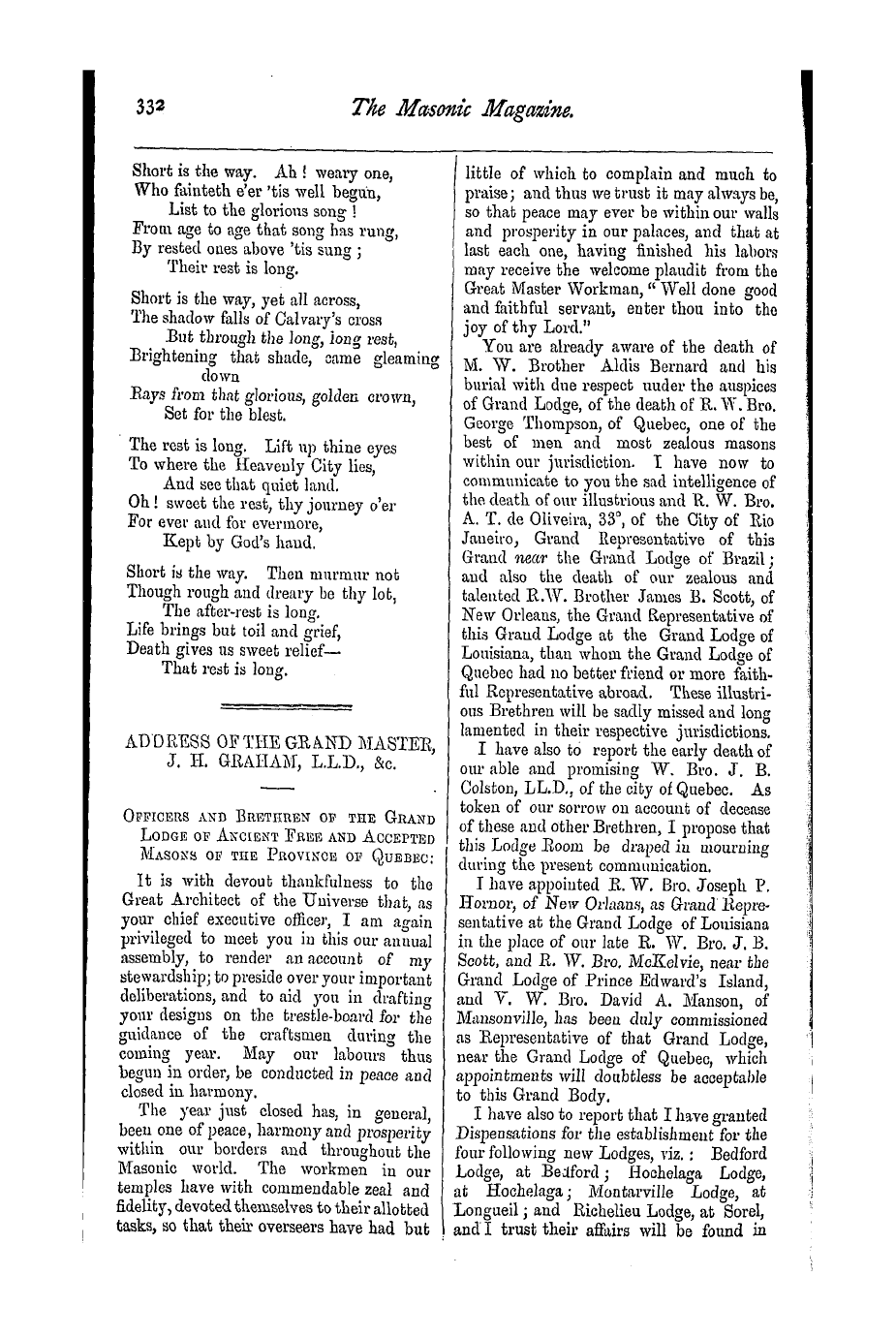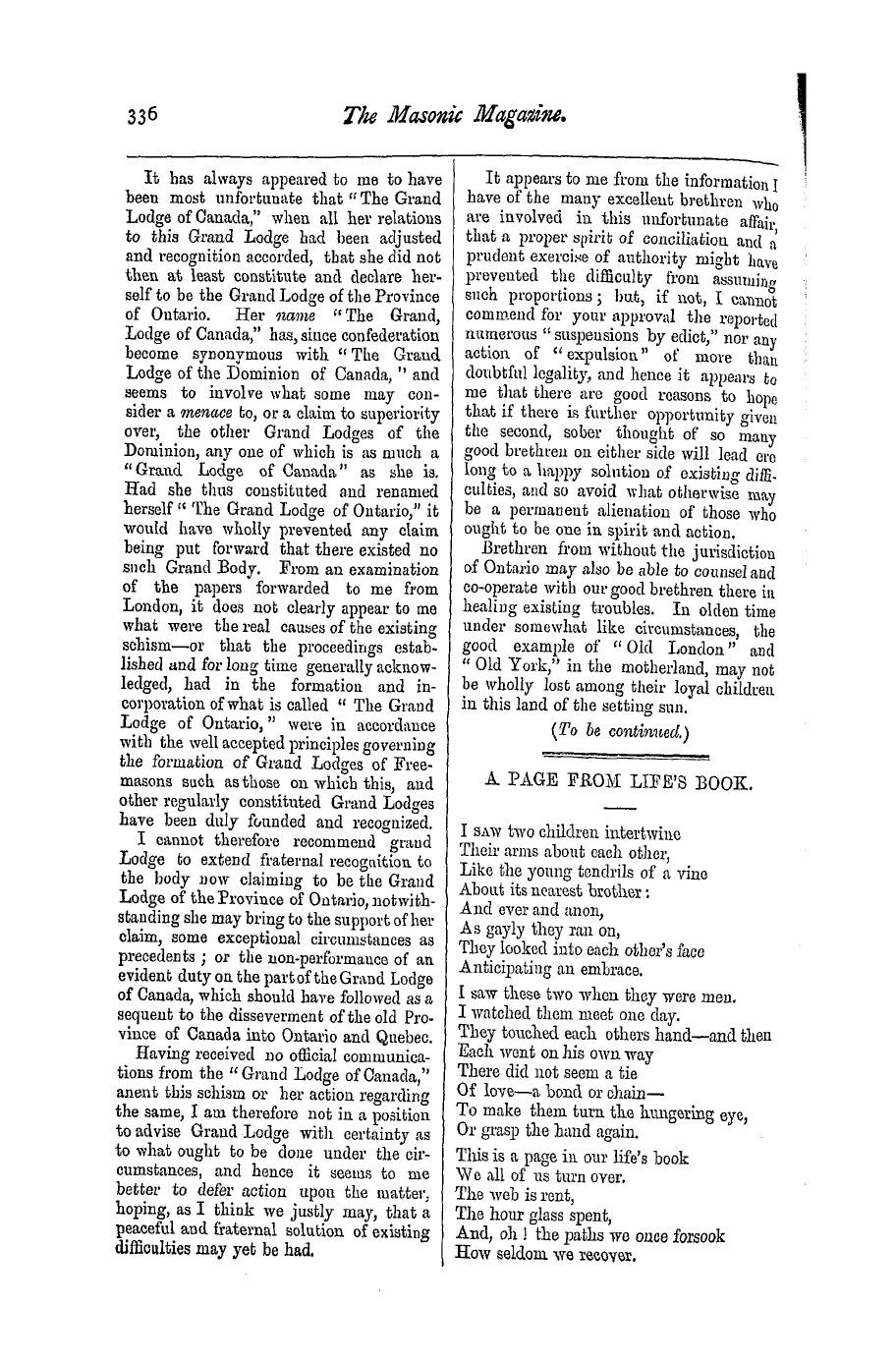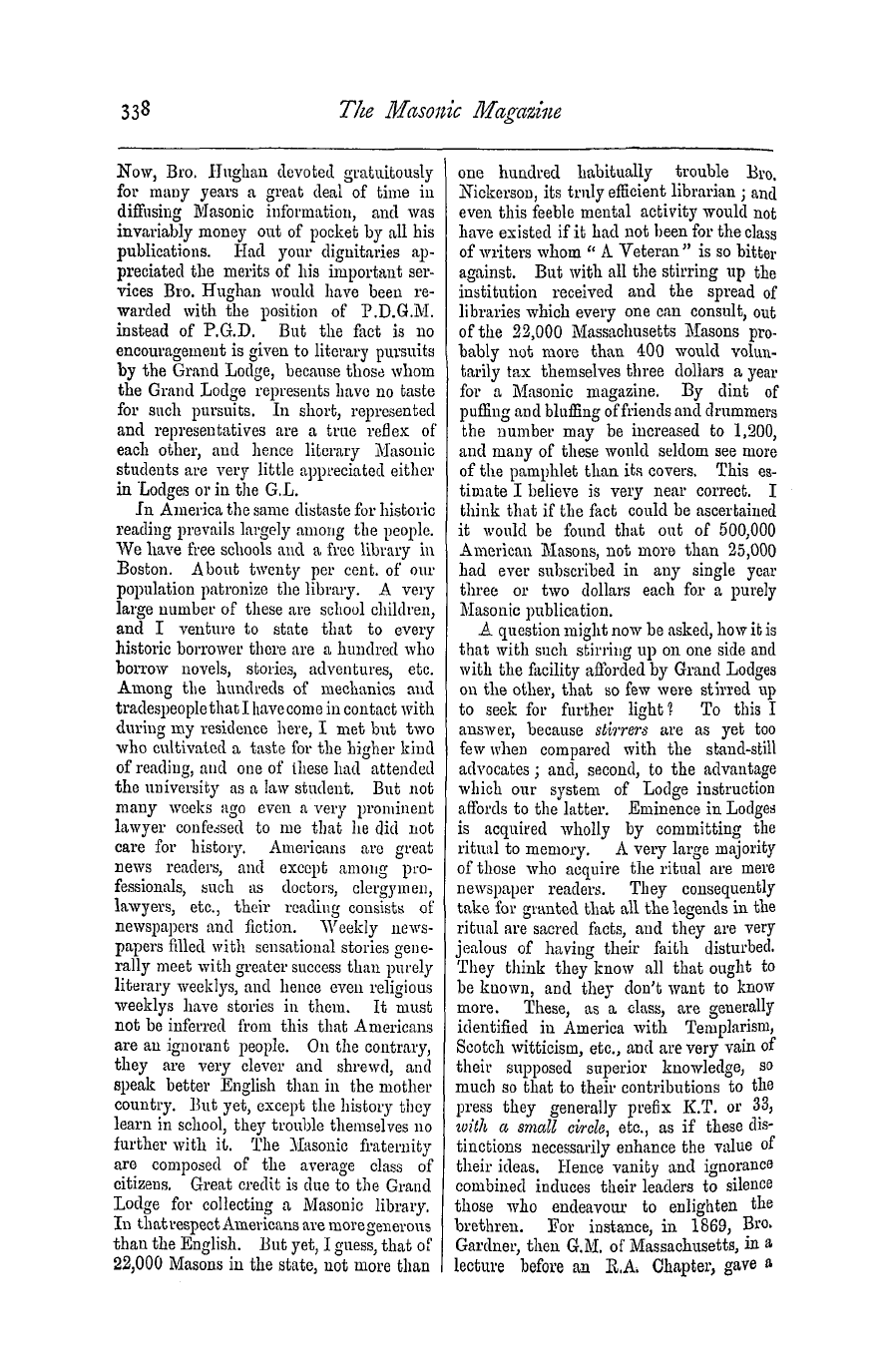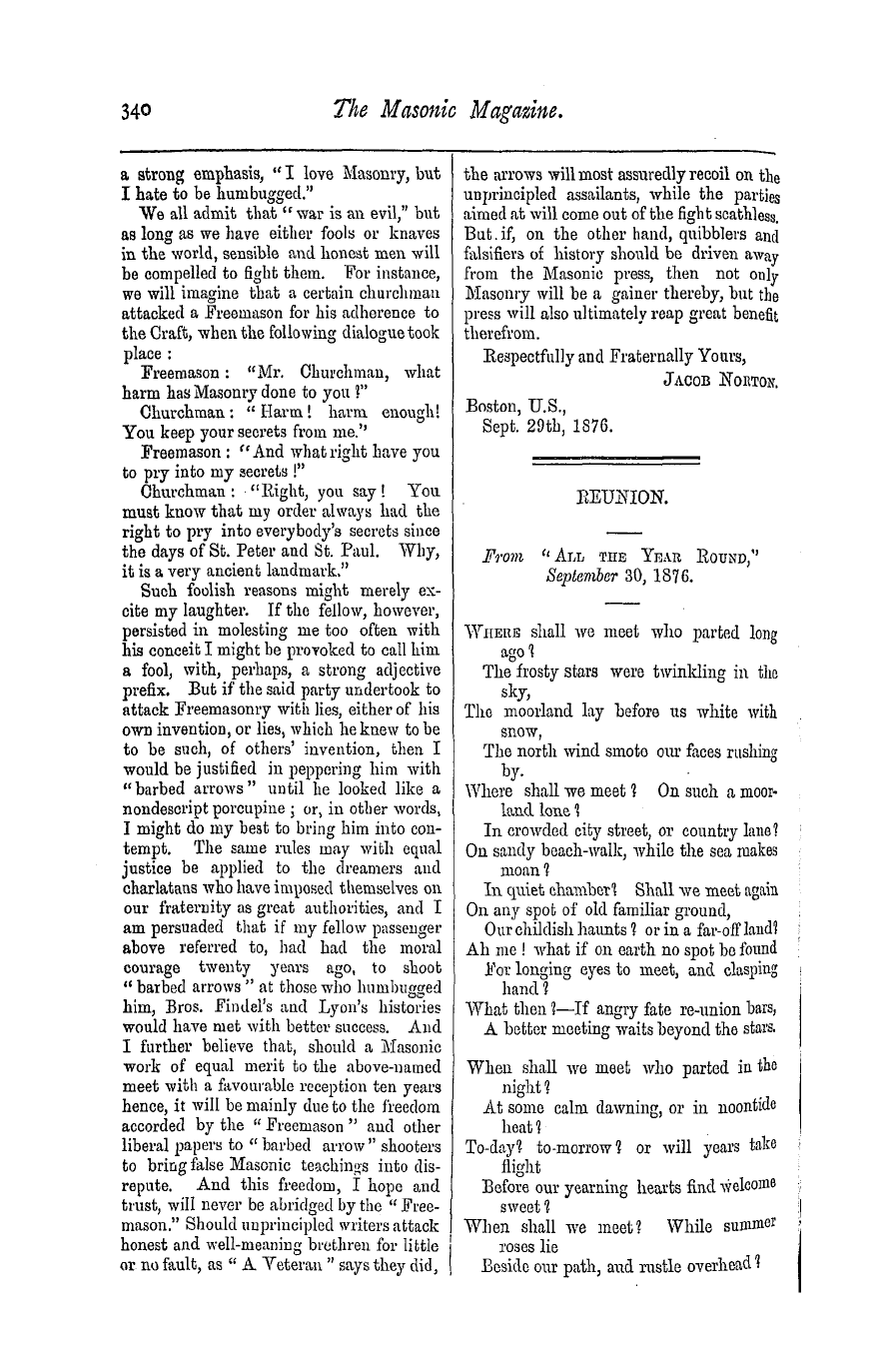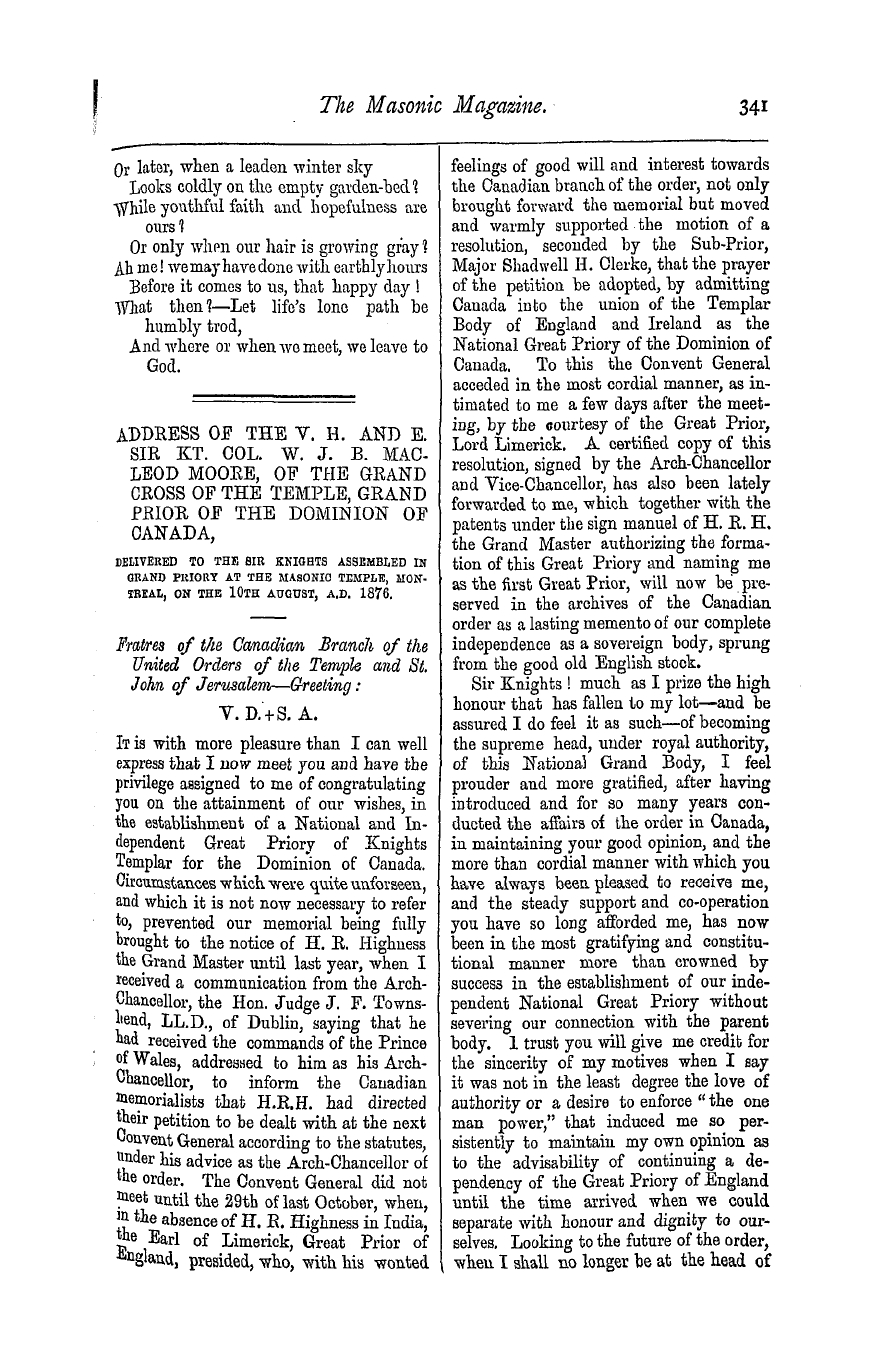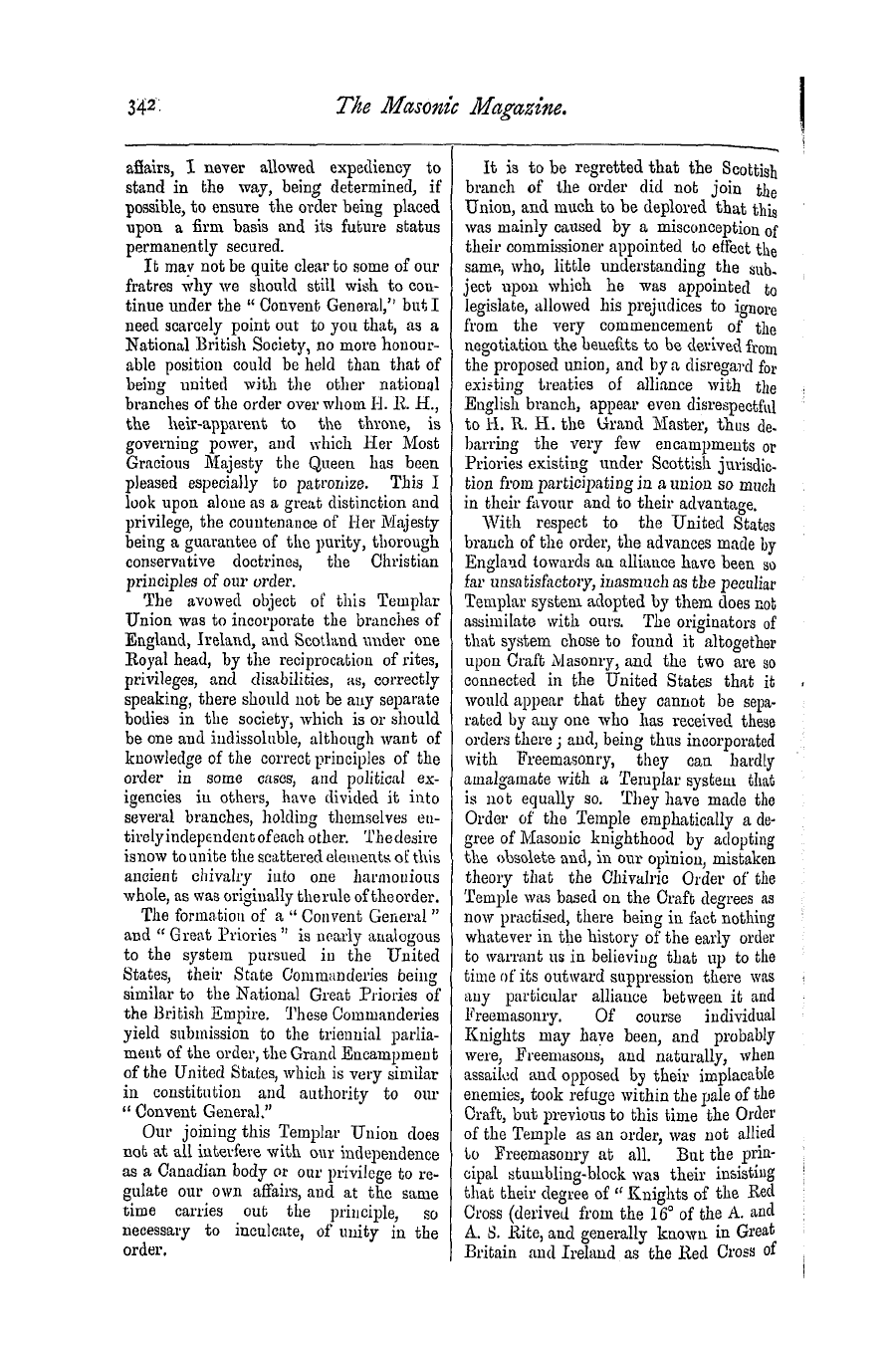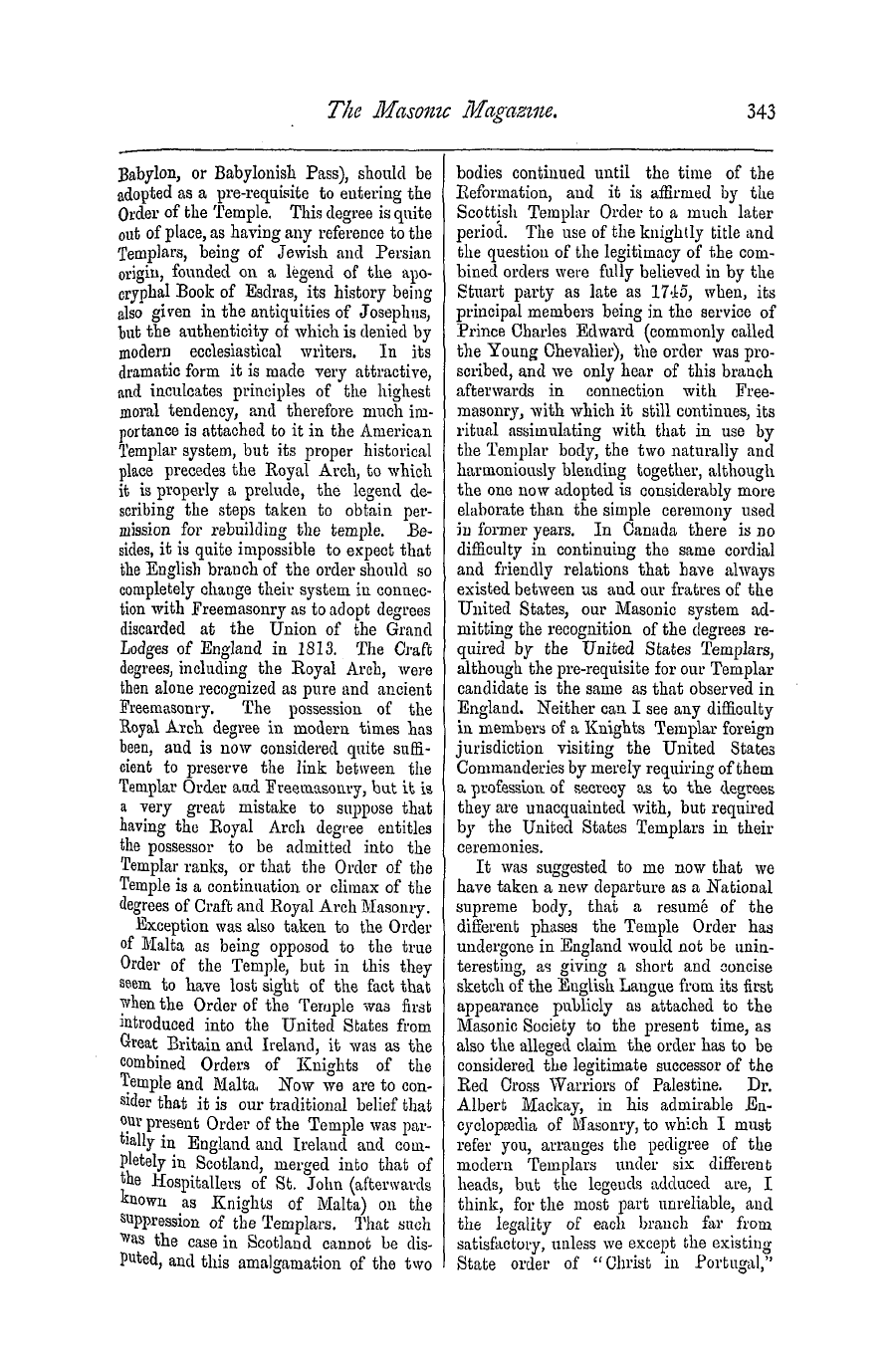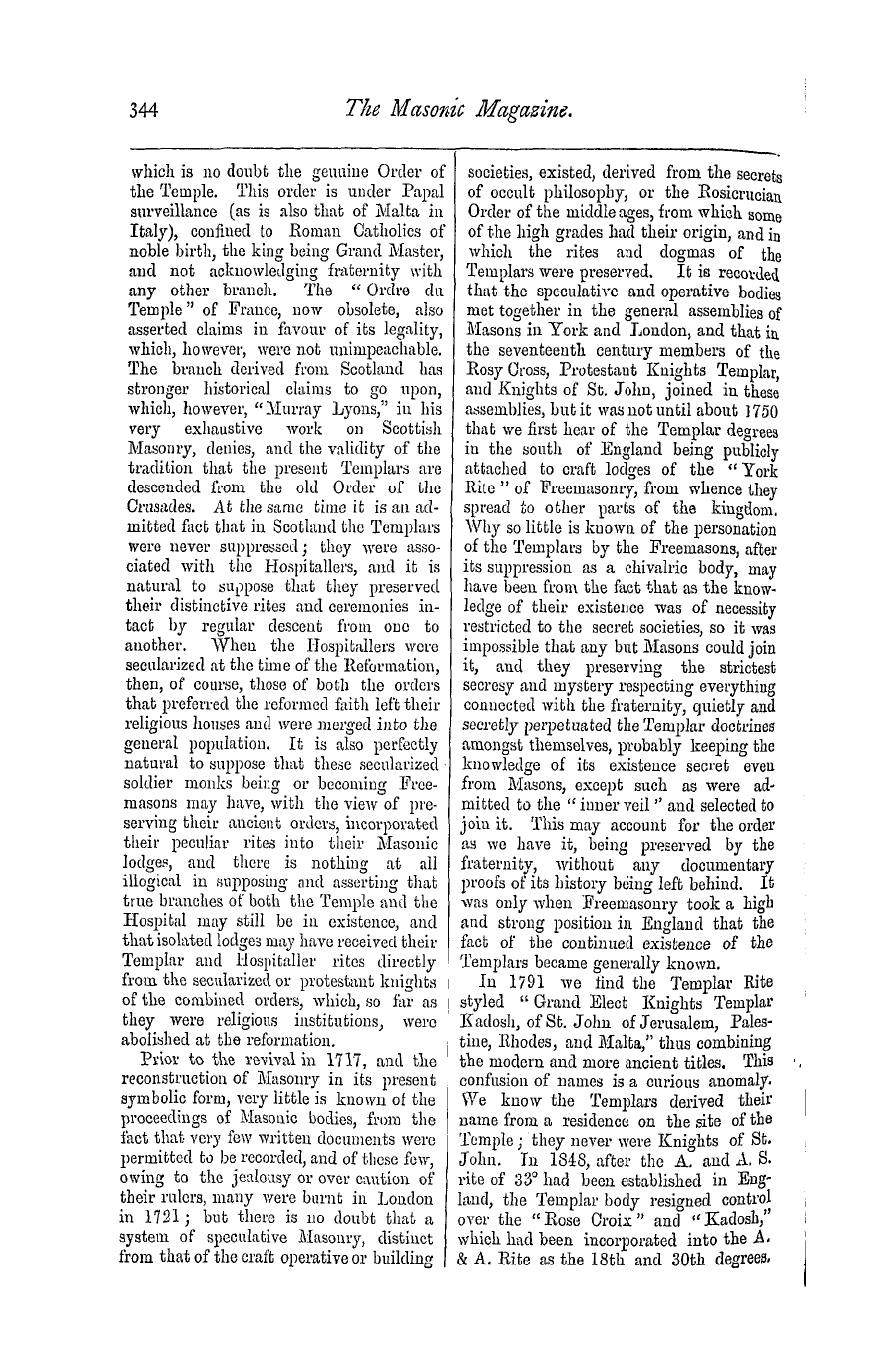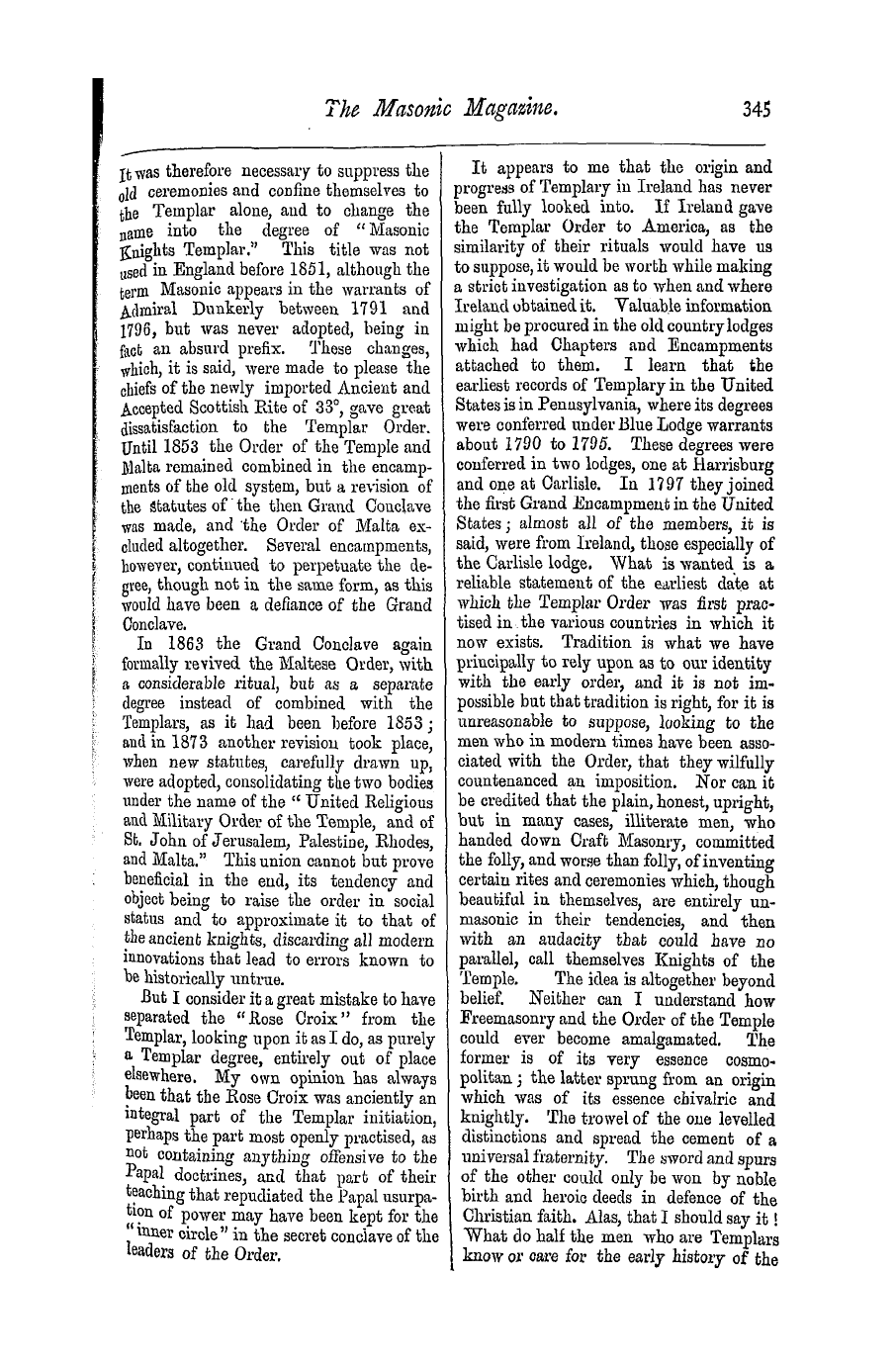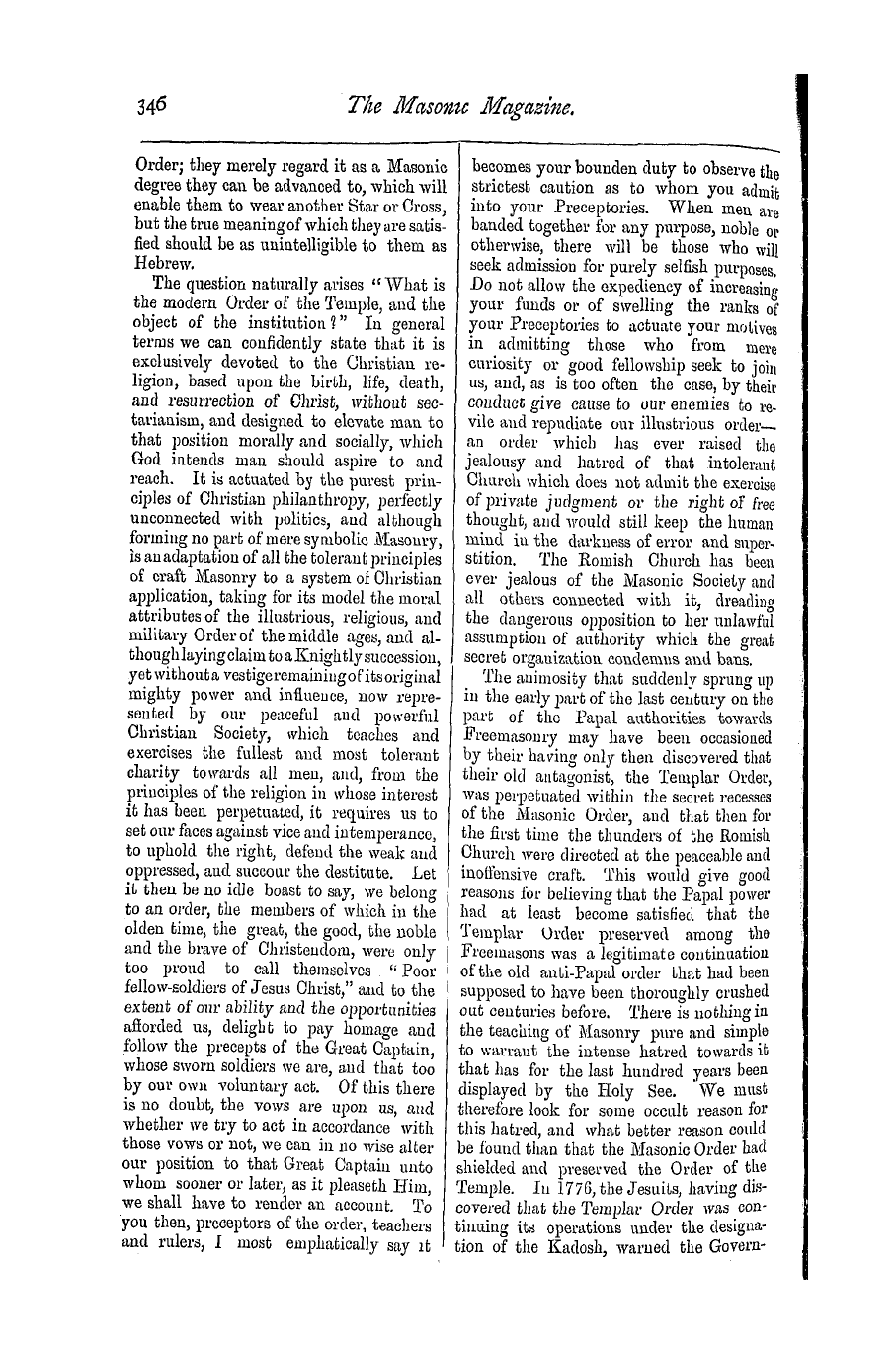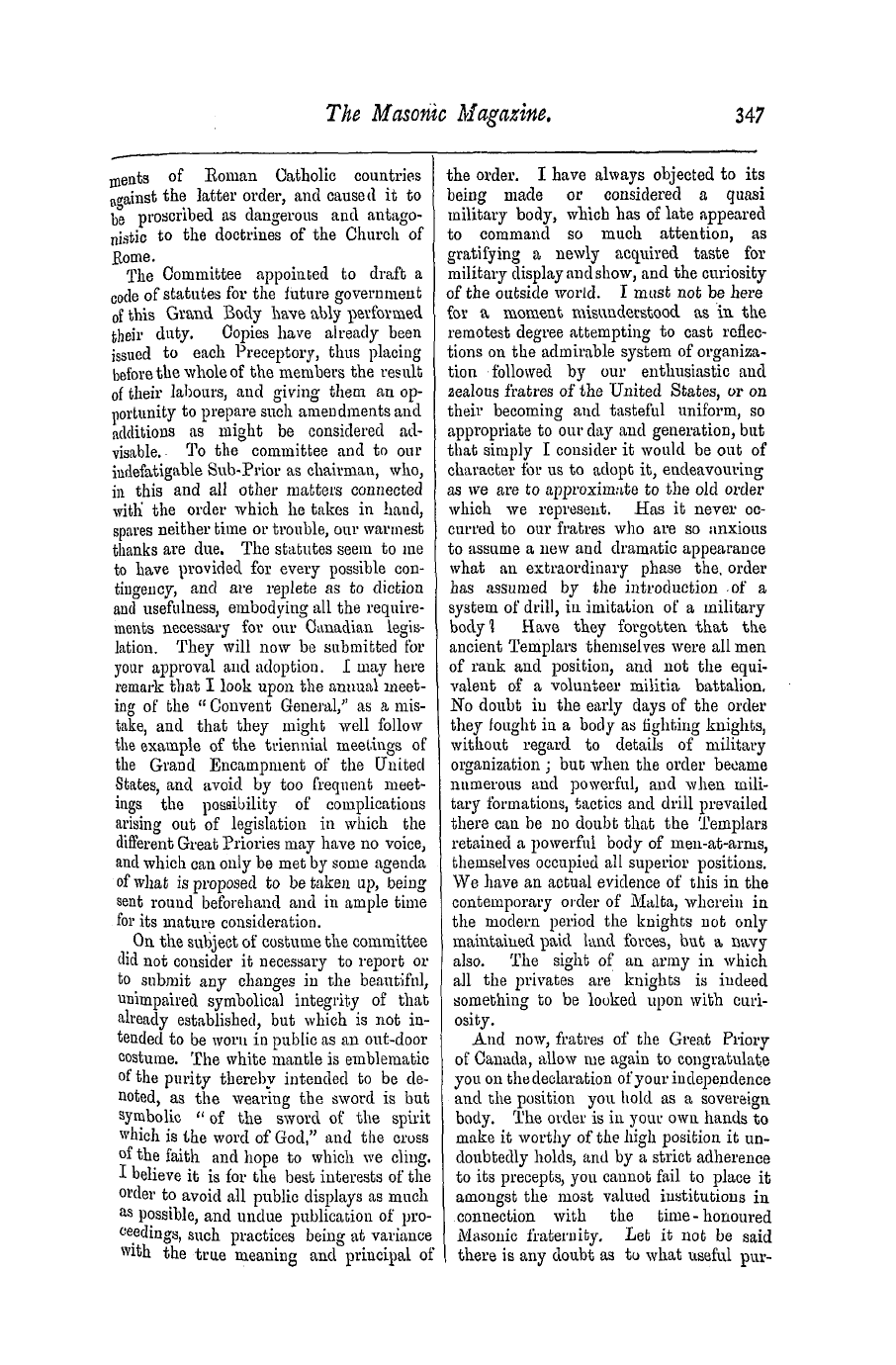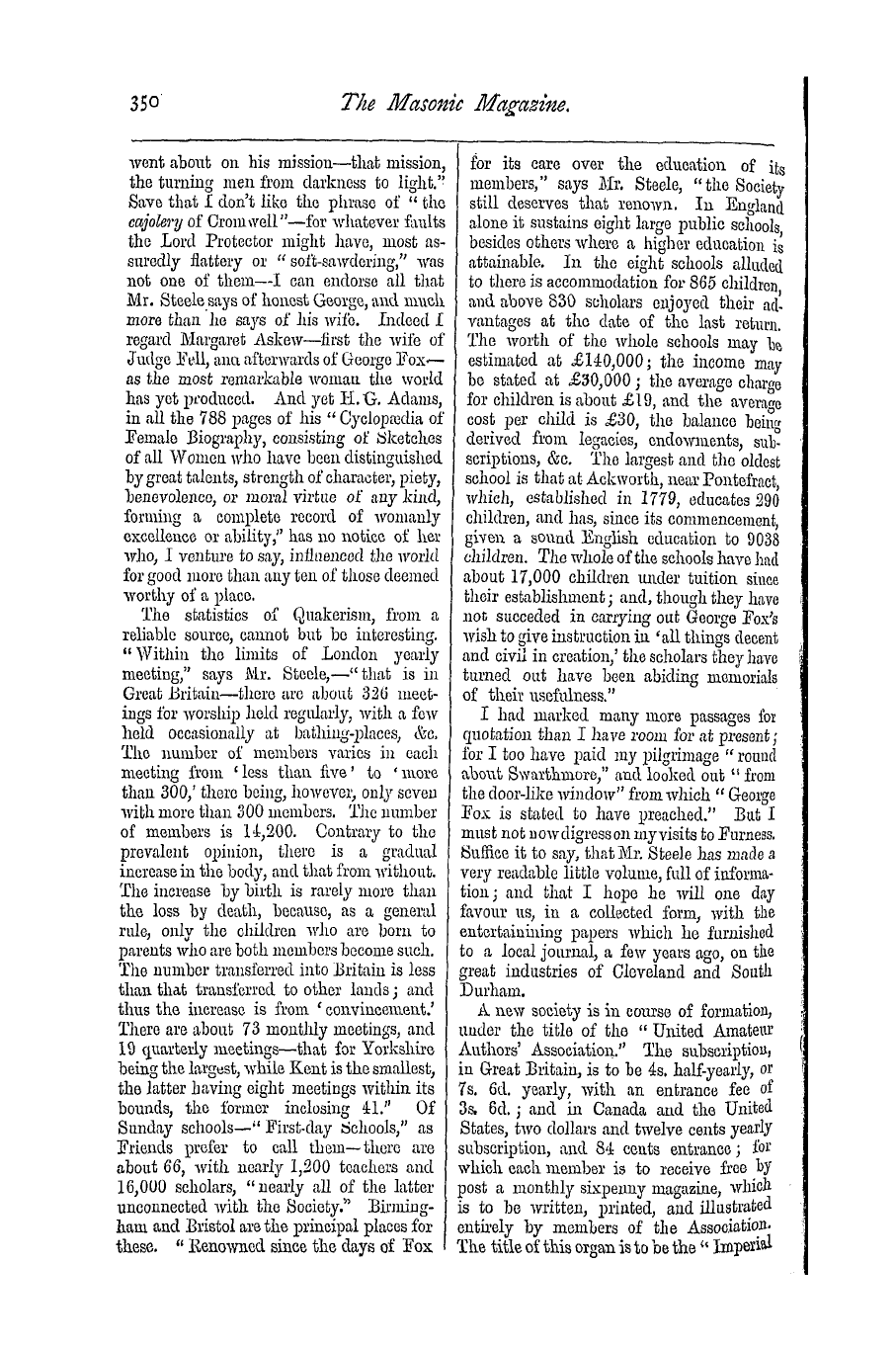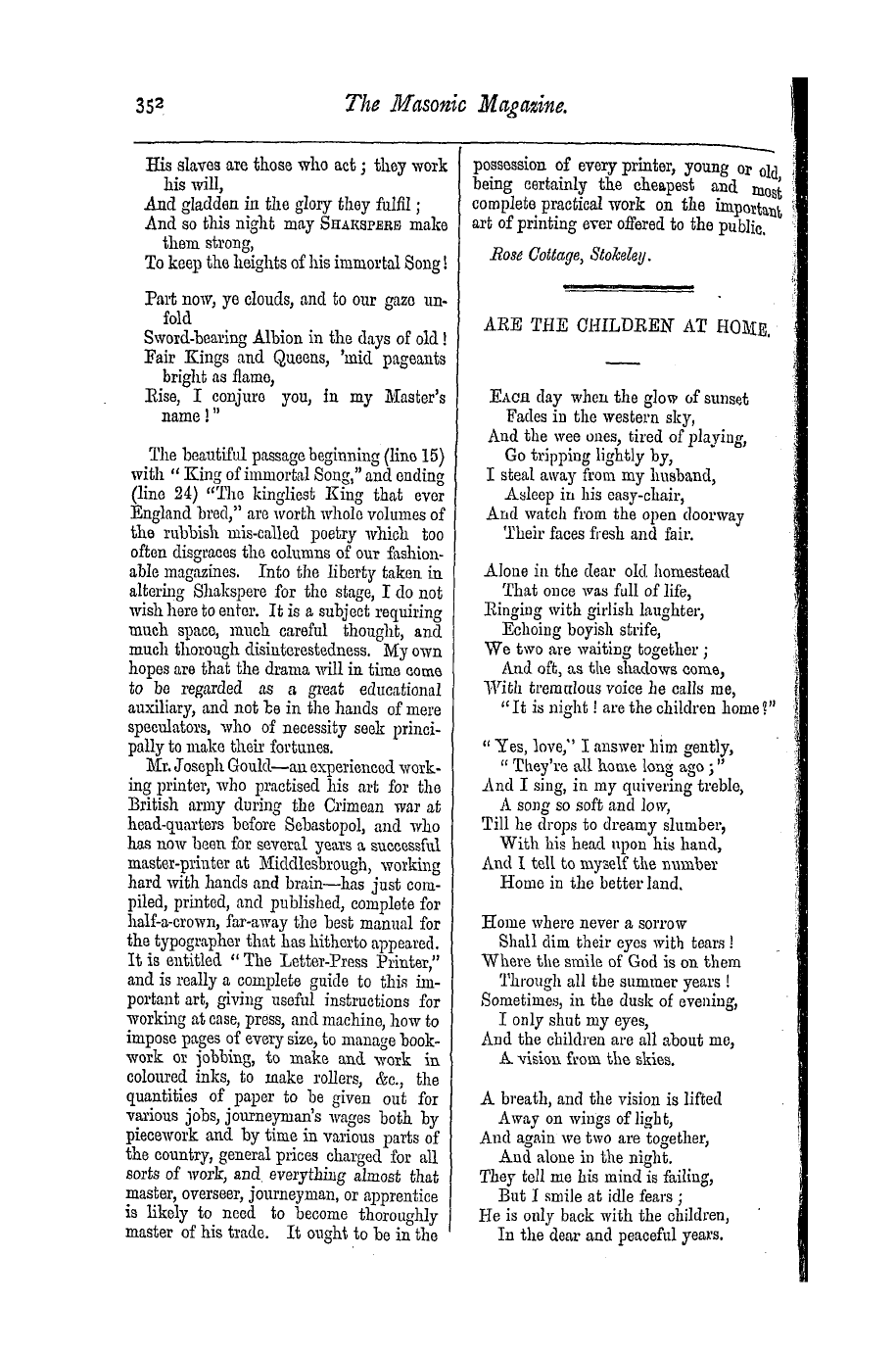Note: This text has been automatically extracted via Optical Character Recognition (OCR) software.
The Origin And References Of The Hermesian Spurious Freemasonry.
triad . " Phtha governed and presided over the intellectual world , and the world above ; but of the material , or physical world , the government belonged to another god , not less ancient than the other two . He was considered as the soul of nature ,
the eye of the world , and the son of Phtha , the active intelligence which had originated the universe . He was no less a personage than the sun , the of the Greeks , and in Egyptian language , is called Re ;" whence the name of Osiris appears to have been derived . Thus Sir William
Druminond says : "if by Sirius both the Sun and the clogstar were originally understood , I should think that the Ethiopians and the Egyptians had obtained the word seir , or sari , or sira , from the Arabians . In Egypt the appellation of soth , or seth , was more
commonly given to the dogstar than sira ; but the Sun , called in the vulgar dialect Re , or . with the definite article phre , was personified and adored under the name of osh-sira ; osh-seir which signified magnus ignis , or magnus sol . " *
The priests described him as one of the earliest kings , and the successor of his father in the government of Egypt , and like him , the special protector of the sovereigns whom adulation regarded as members belonging to the family of this god . The name of Ugypt , as a country , is attributed by the above writer to the
Greeks ; and he explains his meaning by the following process : " A vulture was one of the principal symbols of Ikh-Ptah . A vulture was named noshe in Egyptian . They would put this into Greek gups , or aigupios . The Greek mariners would soon confound the names of the genius of the
river , and of the symbol of the god . They would remember that a vulture was the symbol of the deity , from whom the great river was denominated ; and they might recollect the name of Ptah , though they would , and indeed could , not have
distinctly articulated a word which terminates with an aspirate . Thus the Ikh-Ptah , demon Ptah of the Egyptians may have been corrupted into Aigupios , Gups-Pta , perhaps Aigups-Ptas , and , finally , into Aiguptos . That the Greeks corrupted Ikh-Ptah into Aiguptos seems sufficiently probable . From a passage in Diodorus we
may infer that Sethosis , who took the name of Aiguptois , considered Ptah as his patron god . The Greeks gave the name of Hephaistia to Egypt . Whence came this name , if not from an Egyptian appellation , according to which Egypt was so called
from Ptah ? Cicero says that Ptah was born in the Nile ; and the same deity , according to M . Champollion , was symbolized by a Nilometer . " In correspondence with the triad doctrines , it was held that the angelic
intelligencies are divided into three orders , in essence , virtue , and action . There are also three heavens , which are equally divisible into three ; corresponding to which in the material world , are the spheres of fire , air , and water . The same design is
pursued by the Jewish cabalists , who deduce from a passage in the book of Wisdom , t that this divine quality is recognised under three several denominations , viz . : Light , Power , and Goodness , which continually emanate from the throne of God . And , indeed , in the sacred writings , the Divine Being is represented as seated
on this azure throne , surrounded by a red or fiery sphere , in the centre of an emerald rainbow ; blue being the symbol of Wisdom , Queen of Power , and red of Goodness or Love . Mr . Townley was of opinion that '' in arranging the symbolical works of ancient art we must follow the
mystic system of emanations , which was regularly formed upon one general principle , and not suffer ourselves to be misled by the wild theogonies and fanciful genealogies of the poets , which are all vague , irregular , and incoherent . According to
this ancient system , the first place is to be given to the Supreme Triad , or three great local personifications of the universal spirit , or active principle pervading the elements of / Ether , Earth , and Water , and acting distinctly on each . These are the three
brother deities , Jupiter , Pluto , and Neptune , who were represented under various forms , and distinguished by various attributes or modes of action . In each of these was found a female personification of tho material or passive principle , which was still more variously named and distinguished . Latona , Athene , and Astarle ,
Note: This text has been automatically extracted via Optical Character Recognition (OCR) software.
The Origin And References Of The Hermesian Spurious Freemasonry.
triad . " Phtha governed and presided over the intellectual world , and the world above ; but of the material , or physical world , the government belonged to another god , not less ancient than the other two . He was considered as the soul of nature ,
the eye of the world , and the son of Phtha , the active intelligence which had originated the universe . He was no less a personage than the sun , the of the Greeks , and in Egyptian language , is called Re ;" whence the name of Osiris appears to have been derived . Thus Sir William
Druminond says : "if by Sirius both the Sun and the clogstar were originally understood , I should think that the Ethiopians and the Egyptians had obtained the word seir , or sari , or sira , from the Arabians . In Egypt the appellation of soth , or seth , was more
commonly given to the dogstar than sira ; but the Sun , called in the vulgar dialect Re , or . with the definite article phre , was personified and adored under the name of osh-sira ; osh-seir which signified magnus ignis , or magnus sol . " *
The priests described him as one of the earliest kings , and the successor of his father in the government of Egypt , and like him , the special protector of the sovereigns whom adulation regarded as members belonging to the family of this god . The name of Ugypt , as a country , is attributed by the above writer to the
Greeks ; and he explains his meaning by the following process : " A vulture was one of the principal symbols of Ikh-Ptah . A vulture was named noshe in Egyptian . They would put this into Greek gups , or aigupios . The Greek mariners would soon confound the names of the genius of the
river , and of the symbol of the god . They would remember that a vulture was the symbol of the deity , from whom the great river was denominated ; and they might recollect the name of Ptah , though they would , and indeed could , not have
distinctly articulated a word which terminates with an aspirate . Thus the Ikh-Ptah , demon Ptah of the Egyptians may have been corrupted into Aigupios , Gups-Pta , perhaps Aigups-Ptas , and , finally , into Aiguptos . That the Greeks corrupted Ikh-Ptah into Aiguptos seems sufficiently probable . From a passage in Diodorus we
may infer that Sethosis , who took the name of Aiguptois , considered Ptah as his patron god . The Greeks gave the name of Hephaistia to Egypt . Whence came this name , if not from an Egyptian appellation , according to which Egypt was so called
from Ptah ? Cicero says that Ptah was born in the Nile ; and the same deity , according to M . Champollion , was symbolized by a Nilometer . " In correspondence with the triad doctrines , it was held that the angelic
intelligencies are divided into three orders , in essence , virtue , and action . There are also three heavens , which are equally divisible into three ; corresponding to which in the material world , are the spheres of fire , air , and water . The same design is
pursued by the Jewish cabalists , who deduce from a passage in the book of Wisdom , t that this divine quality is recognised under three several denominations , viz . : Light , Power , and Goodness , which continually emanate from the throne of God . And , indeed , in the sacred writings , the Divine Being is represented as seated
on this azure throne , surrounded by a red or fiery sphere , in the centre of an emerald rainbow ; blue being the symbol of Wisdom , Queen of Power , and red of Goodness or Love . Mr . Townley was of opinion that '' in arranging the symbolical works of ancient art we must follow the
mystic system of emanations , which was regularly formed upon one general principle , and not suffer ourselves to be misled by the wild theogonies and fanciful genealogies of the poets , which are all vague , irregular , and incoherent . According to
this ancient system , the first place is to be given to the Supreme Triad , or three great local personifications of the universal spirit , or active principle pervading the elements of / Ether , Earth , and Water , and acting distinctly on each . These are the three
brother deities , Jupiter , Pluto , and Neptune , who were represented under various forms , and distinguished by various attributes or modes of action . In each of these was found a female personification of tho material or passive principle , which was still more variously named and distinguished . Latona , Athene , and Astarle ,



































































